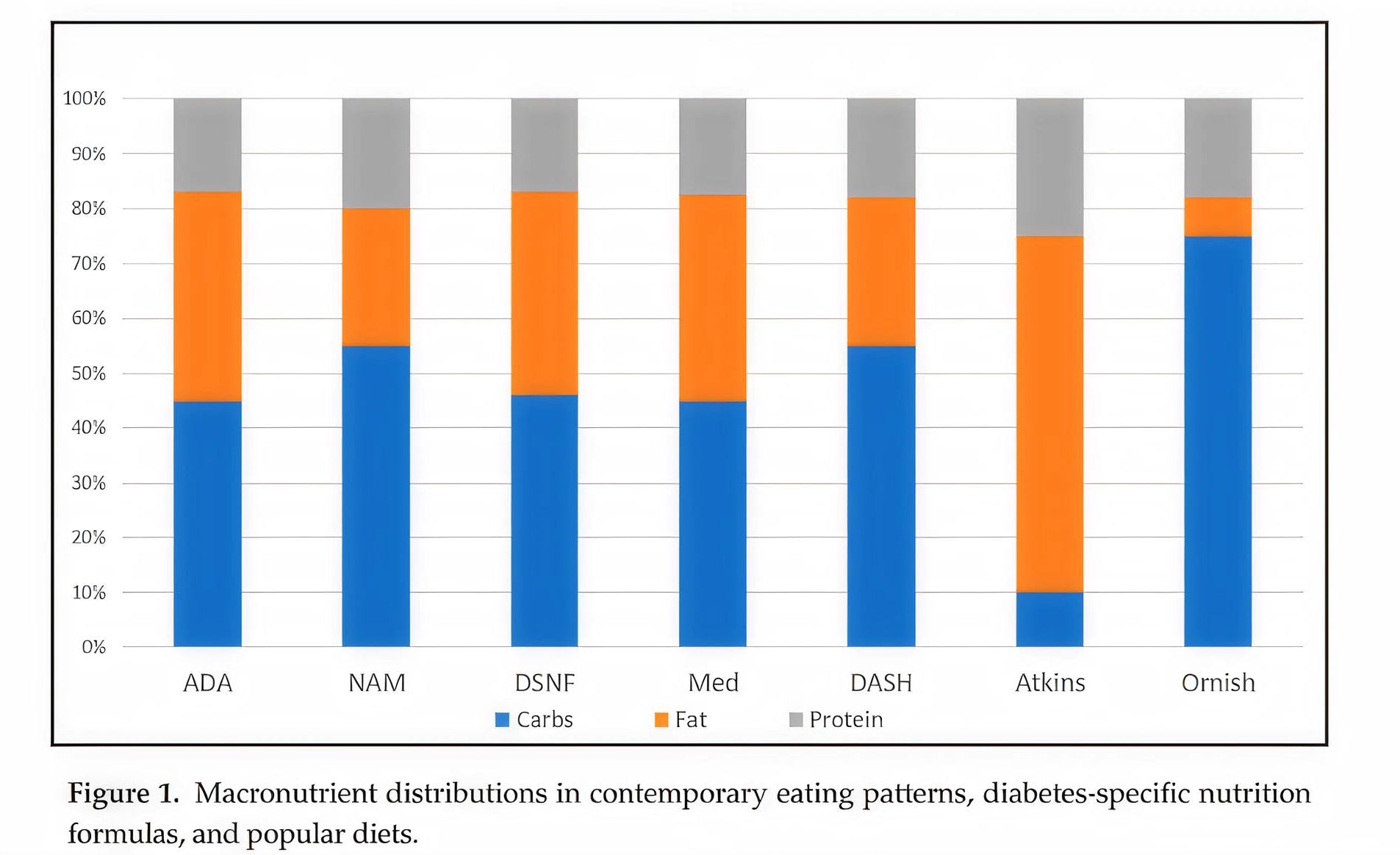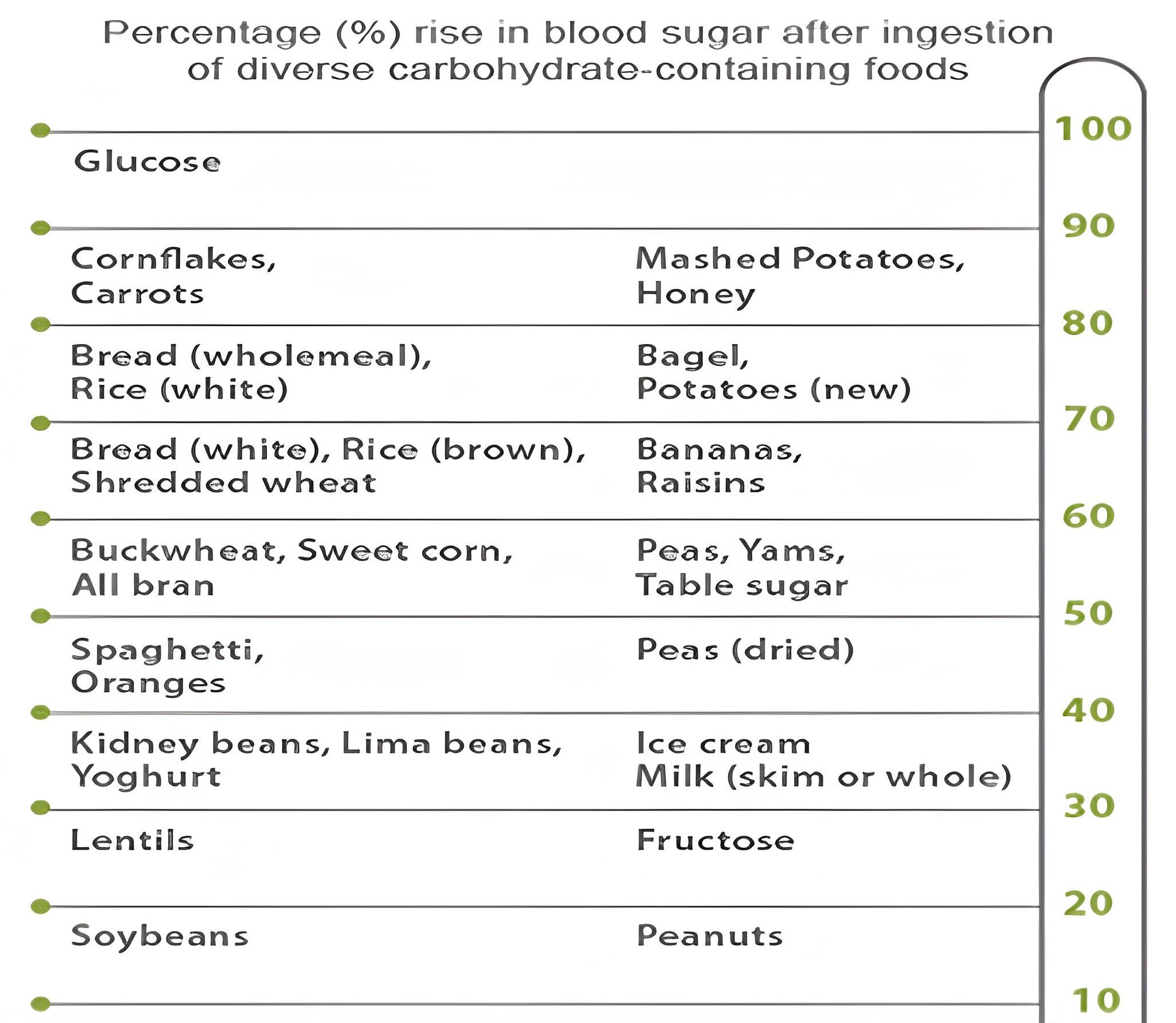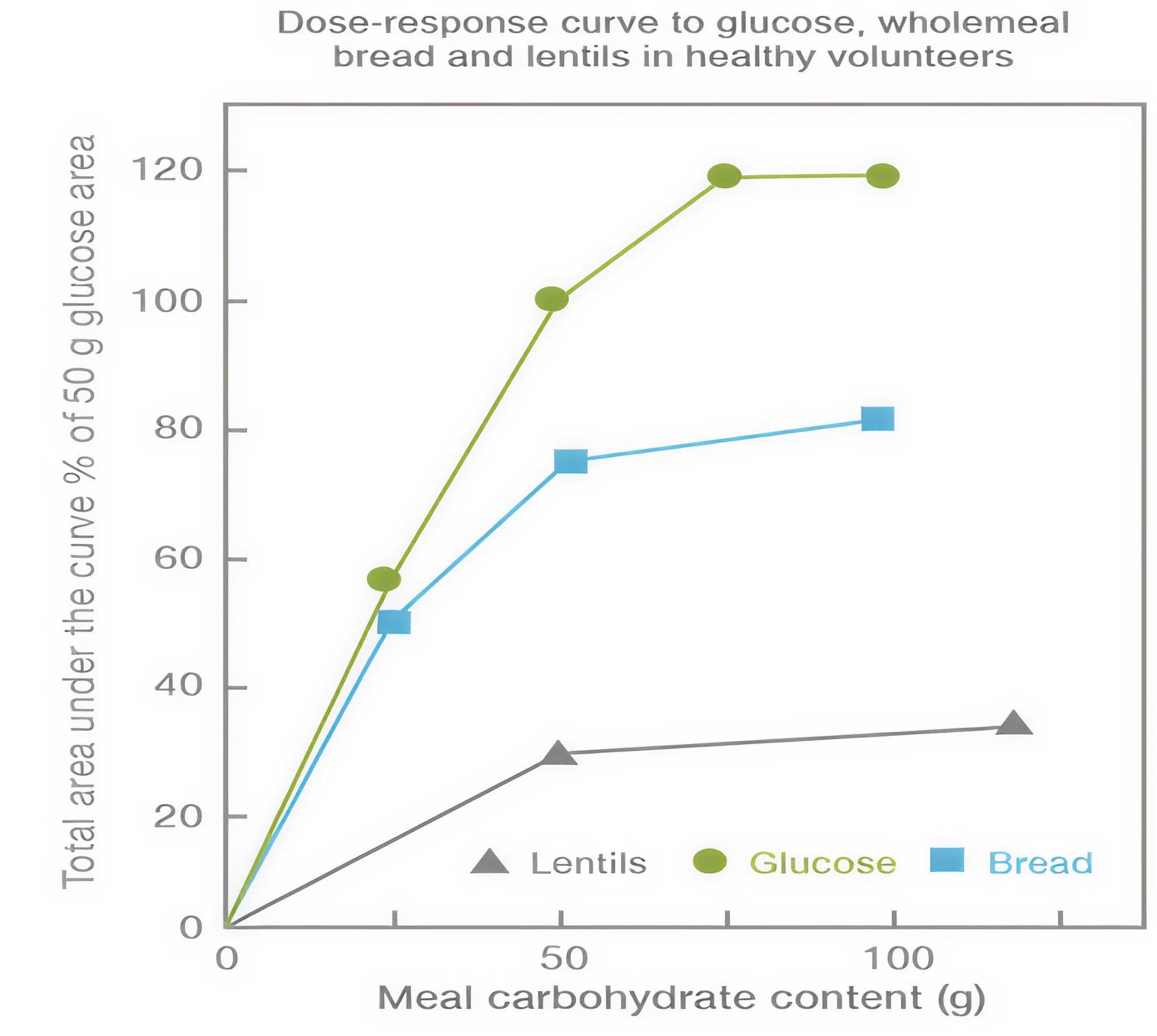A low carb diabetes diet has been found effective in type 2 diabetes nutrition. Such a diet can lower hemoglobin A1c (HbA1c), improve insulin sensitivity, and reduce diabetes complications. Additionally, diabetes-specific nutrition formulas (DSNFs) can be used as part of a low carb diabetes diet. DSNFs used in diabetes low carbohydrate diets are evidence-based and versatile. They can be taken in meal or snack substitution, as well as in very-low-calorie diets for weight loss. In patients with diabetes who are admitted for hospital care, support of enteral nutrition using DSNFs can help in maintaining glycemic balance. In the case of malnourished patients with diabetes, hypercaloric supplementation using DSNFs can help in managing energy and nutrient requirements without compromising blood glucose levels.
Benefits of a Low Carb Diabetes Diet
First, let’s examine the clinical evidence supporting the use of low carb diets in type 2 diabetes (T2D) nutrition.
Dorans et al. Randomized Clinical Trial Design
This randomized clinical trial (RCT) examined the effects of a low-carbohydrate diet on body weight, fasting plasma glucose, and HbA1c in 150 untreated adults with an HbA1C range between 6.0% and 6.9%.
A low carbohydrate diet in this study comprised a two-phased meal plan:
Phase 1 is "Go Low" and was conducted over the first 3 months of the study with a target of<40 g net carbohydrates/day.
Phase 2 is "Keep it Low" and was conducted over the next 4-6 months with a target of <60 g net carbohydrates/day.1
Dorans et al. RCT Key findings:
Reduction in HbA1c: At six months, there was a greater reduction in HbA1c in the group on a low carbohydrate intake (-0.26%) than in the normal diet group (-0.04%).
Weight Reduction: The intervention group lost a significant amount of weight (-6.4kg) in relation to the control group (-0.5kg).
Better Fasting Plasma Glucose: The fasting plasma glucose levels in the intervention group improved more (-10.3 vs. +1.9 in the control group).
Metabolic Advantages: The intervention group also showed lower fasting levels of insulin (-6.2 µIU/L vs. +2.3 µIU/L in the control group), lower levels of insulin resistance (decrease in HOMA-IR of -2.4 vs. +0.8 in the control group), and smaller waist circumference (-5.2 cm vs. -0.5 cm in the control group).1
Second, let’s take a closer look at the benefits of using DSNFs in low carb diabetes diets.
Evidence-based DSNFs in Low Carb Diabetes Diets
A primary advantage of DSNFs is normalizing levels of blood glucose due to lower glycemic index. DSNFs are also rich in nutrient content, which consist of fiber, polyunsaturated and monounsaturated fatty acids (MUFAs), and high-quality proteins. These advantages are backed by multiple clinical trials which demonstrated the potential of DSNFs in lowering postprandial glucose, HbA1c, and glycemic variability better than standard forms of nutrition.
In fact, DSNFs are aligned with recommended levels of macronutrient distribution by the American Diabetes Association (ADA). Figure 1 illustrates how ADA and DNFs are closely aligned. Carbohydrates, fat, and proteins in DSNFs have a macro-distribution of 37–55%, 30–45%, and 15–19%, respectively. In contrast, well-known diets such as the Mediterranean, DASH, Atkins, and Ornish, which consist of a composition of 55%:27%:18%, 10%:60–70%:20–30%, and 75%:7%:18%, respectively, have a different ratio of carbohydrates, fat, and proteins.2

Additional favorable results of low-carbohydrate diets and DNSFs
Metabolic
Cardiovascular disease is a severe diabetes complication so controlling lipids is crucial. The results have indicated that DSNFs improve the overall lipid profile by lowering total cholesterol, LDL-C, and triglyceride levels.2
Behavioral
Low-carbohydrate diet was complemented by an increase in healthy fat and protein intake, which suppressed appetite and caused feelings of fullness.1
Weight Control
Excess adiposity contributes immensely to diabetes and cardiometabolic diseases. The portion-controlled intake of calories in DSNFs facilitates weight control.2 In a similar manner, a low-carbohydrate meal plan facilitates weight reduction.1
Hormonal and Inflammatory
One of the distinguishing factors of metabolic syndrome and diabetes is a state of constant, low-grade inflammation. The bioactive compounds in DSNFs, including polyphenols and omega-3 fatty acids, modulate inflammatory pathways.2
Economic
The integration of DSNFs and carbohydrate-reduced diets in diabetes care strategies is cost-benefit for care systems.1,2 The studies have indicated that hospitalization, ED visits, and costs of care in patients with diabetes reduce due to DSNFs.2
The Type of Carbohydrate Matters
While a diabetes low-carbohydrate diet is important, carbohydrate quality also matters. Complex carbohydrates of low glycemic index (GI) are most beneficial for T2D because they release glucose slowly in the body, leading to more stable blood glucose.3 Figure 2 compares the GI of various types of food and compares blood glucose after consuming different types of carbohydrates.4-6
Complex carbohydrates are digested and released as glucose into the bloodstream more slowly than simple sugars, resulting in steadier blood glucose levels.
Blood Sugar Response to Carbohydrate-Containing Foods

Graph: Dose-response curve to glucose, whole meal bread and lentils
This graph shows the total area under the glucose curve (as % of 50 g glucose area) in response to different amounts of carbohydrates from glucose, whole meal bread, and lentils. The glucose line shows the steepest rise, indicating the highest blood sugar response. Bread results in a moderate increase, while lentils produce the lowest glycemic response.

Final Thoughts
DSNFs and low-carbohydrate diets are now considered evidence-based solutions for improved glycemic control, lipid profile, and body weight in patients with diabetes. The integration of these diets in T2D treatment is clinically valuable as it has proven clinical benefits.
Discover More: Creating a Balanced Breakfast for Diabetes
Click hereReferences
- Dorans KS, et al. JAMA Netw Open. 2022;5(10):e2238645. doi: 10.1001/jamanetworkopen.2022.38645.
- Mechanick JI, et al. Nutrients. 2020;12(12):3616. doi: 10.3390/nu12123616.
- Gulati S, et al. Diabetes Metab Syndr Clin Res Rev. 2015;9:252–7.
- Sheard NF, et al. Diabetes Care. 2004;27:2266–71.
- Carbohydrates: The great balancing act. News and Publications, University of Iowa Health Care website.
- Jenkins DJ, et al. Am J Clin Nutr. 1981;34:362–6
In type 2 diabetes nutrition, a low carb diabetes diet has emerged as a recommended strategy. Accordingly, diabetes-specific nutritional formulas (DSNFs) are formulated with optimized macronutrient compositions that take into account the latest diabetes nutritional strategies. Both low carbohydrate diets and DSNFs aim to stabilize blood glucose levels and enhance insulin sensitivity. Find out more about these interventions.
